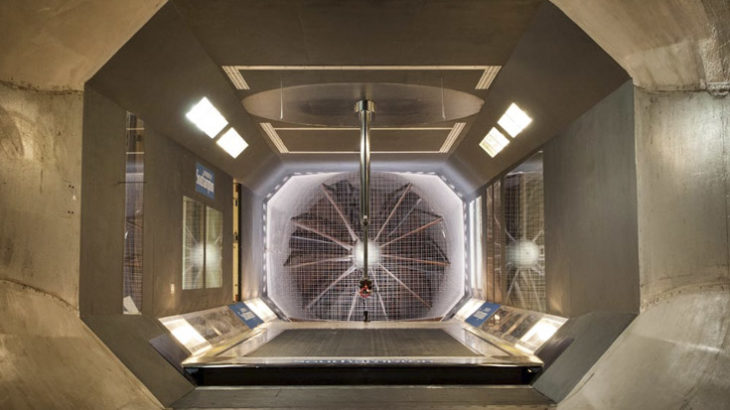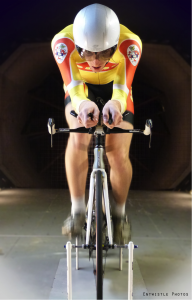Spotlight On: R. J. Mitchell Wind Tunnel

Each month we post a new edition to the SES ‘Spotlight On…’ series, showcasing equipment at our institutions, providing information and case studies for interested researchers/industries, and promoting better use of already available equipment.
The Mitchell Wind Tunnel at Southampton is a low speed wind tunnel capable of testing the aerodynamic performance of a wide range of items from various industries at wind speeds of up to 40m/s (or 90mph). The facility can be used to test cars, HGVs, trains, unmanned air vehicles, aircraft or components thereof, wind turbines, cyclists, boat hulls and underwater autonomous vehicles to name a few! The normal outputs of such tests would be measured forces and moments from the test item, on surface pressures or by using off surface flow imaging systems to visualise the flow around the item. The facility can be hired with no support (besides a technician to operate the tunnel) or otherwise test items can be sent to the Wind Tunnels and their experienced consultant engineers can provide a full service with reports and certificates as an output.
A control room refurbishment was undertaken in 2020, updating the areas in which customers and students carry out tests.
 SLA’s/standards associated with facility:
SLA’s/standards associated with facility:
None
Current Research:
Current research and development work by Windship Technology integrate modern foil technology to reduce global shipping emissions. More information on this ongoing project can be found in this video.
Past research using the facility has looked at tailoring composites for deformation control. This combined simultaneous force measurements from various daggerboard models with 3D Digital Image Correlation and 3D Particle Image Velocimetry (both high resolution and high speed).
Equipment also now based at the Boldrewood site:
- A very nearly operational 140m long towing tank (contacts here)
- An anechoic wind tunnel (contact here)
- A recirculating water flume (contact here) and;
- A boundary layer wind tunnel (contact here).
Who has access?
Virtually anyone. Used internally by Undergraduate and Postgraduate Students (see: Clean Sky Project and The Icarus Project. As a National Wind Tunnel Facility the tunnel is also available to use by any UK University when included as part of research proposals. The tunnel can also be hired for commercial use by external individuals or companies (see: Boardman Bikes).
Potential relevant disciplines:
Aerodynamics, Calibration services, Aeroacoustics, Aeroelastics, Automotive, Performance Sports
Links:
Image credit: Alastair Philip Wiper
Contact:

Dr David Marshall
Wind tunnel manager, Engineering and Physical Sciences, University of Southampton.

